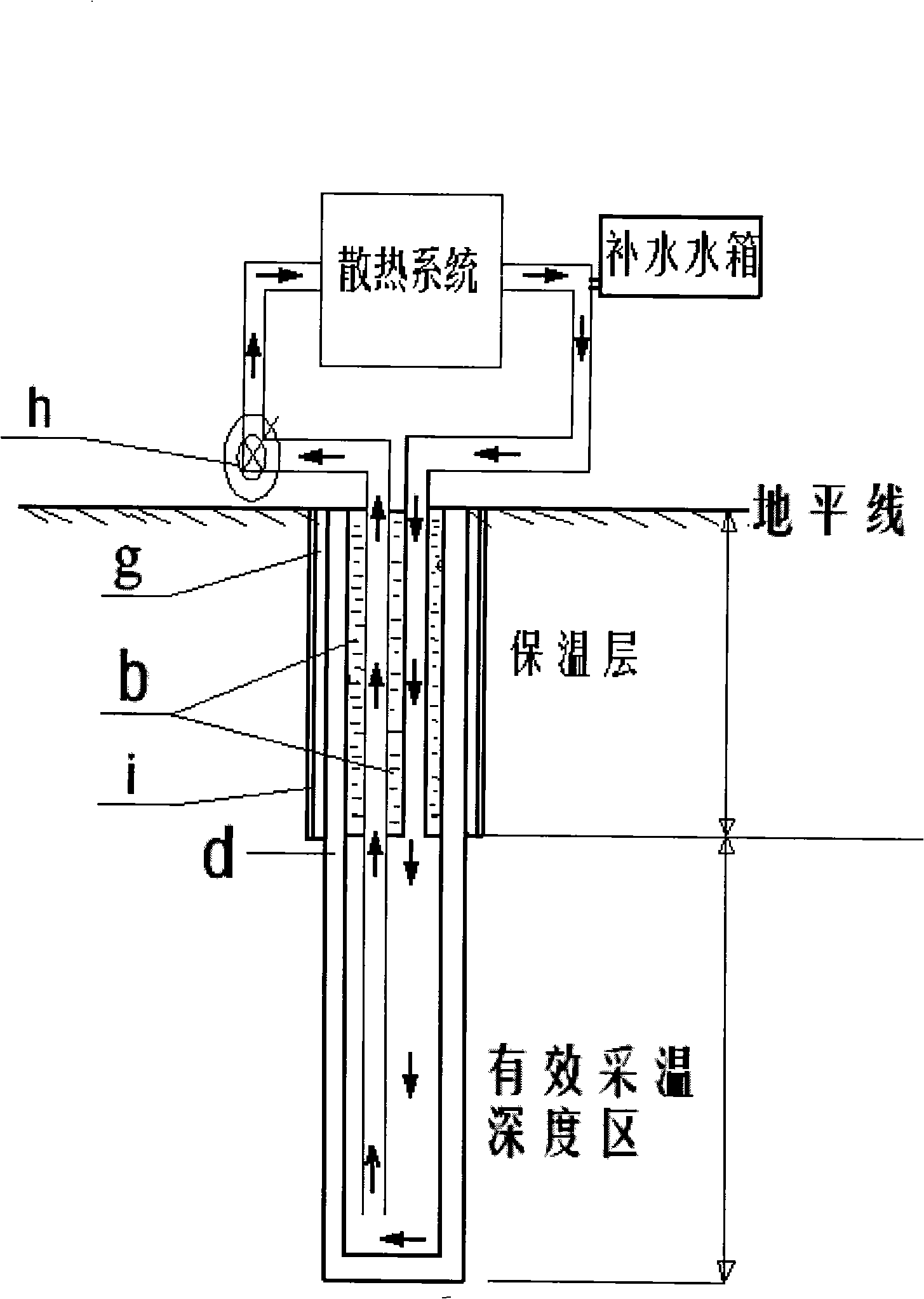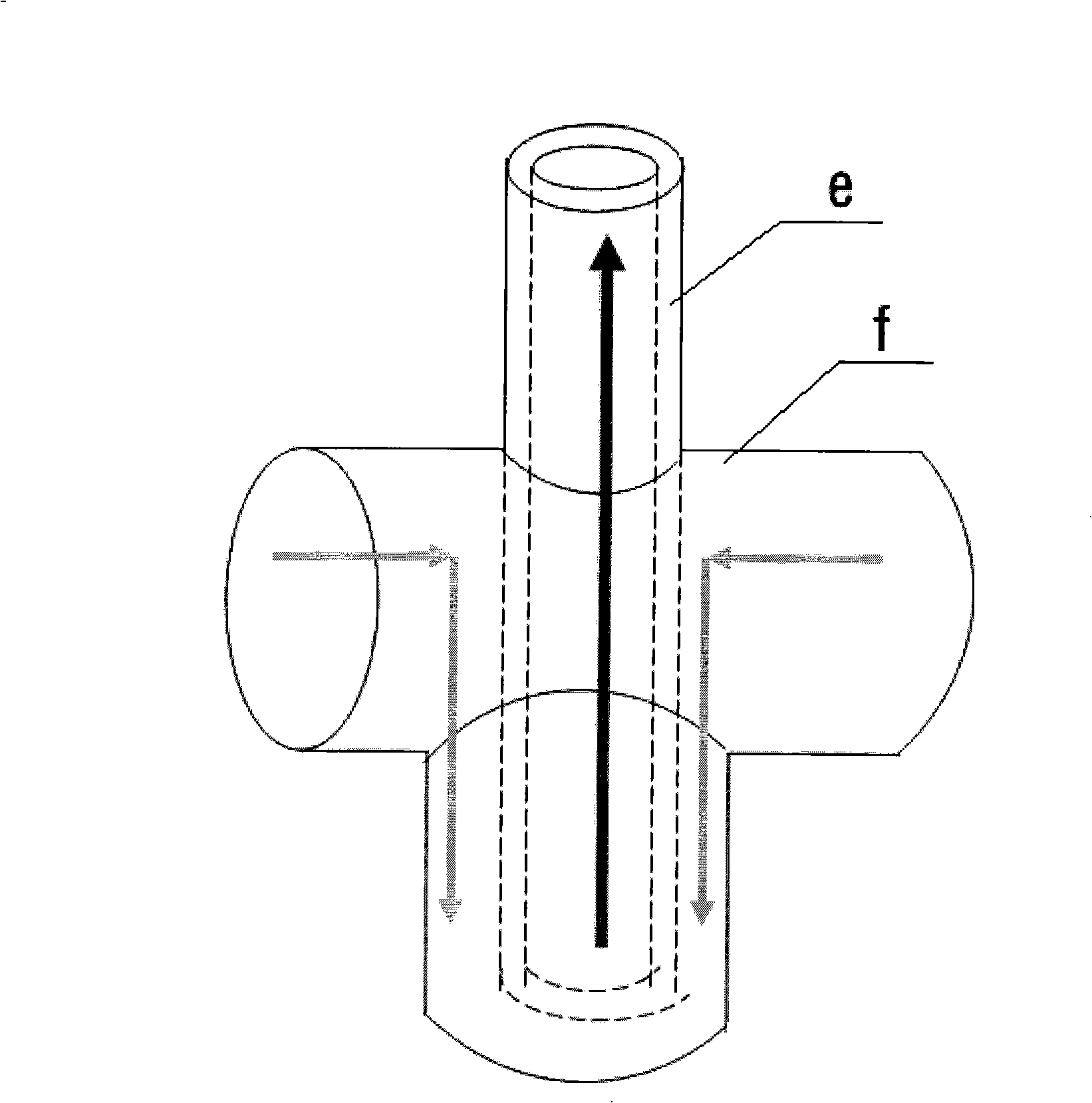Deep layer terrestrial heat renewable energy source winter heating method
A renewable energy, deep-seated technology, applied in the direction of renewable energy integration, geothermal power generation, heating methods, etc., can solve the problems of backward comprehensive energy-saving technology, high one-time cost, complex technology, etc., and achieve high practical value and promotion value , Renewable operating costs, endless effects
- Summary
- Abstract
- Description
- Claims
- Application Information
AI Technical Summary
Problems solved by technology
Method used
Image
Examples
Embodiment Construction
[0024] combined with Figure 2-4 , to further describe the present invention:
[0025] (1) Utilize a large drilling rig to drill a deep well with a diameter of 10 inches;
[0026] (2) stop drilling when the measured formation temperature reaches 40 degrees by logging equipment, and measure the well depth;
[0027] (3) Replace the 7-inch drill bit and continue drilling down;
[0028] (4) stop drilling when the measured formation temperature reaches 75-80 degrees, and measure the well depth;
[0029] (5) Calculate the length of the 7-inch well depth and the length of the 10-inch well depth;
[0030] (6) Lower the 7-inch casing to the bottom of the well, with a length of about 1000-1600 meters;
[0031] (7) At the same time, the 1-inch casing with thermal insulation protection layer reaches the junction of 10 inches and 7 inches, and the length is about 1,000 meters;
[0032] (8) Carry out cementing work at the bottom of the well; (9) Carry out cementing work at the upper we...
PUM
 Login to View More
Login to View More Abstract
Description
Claims
Application Information
 Login to View More
Login to View More - R&D
- Intellectual Property
- Life Sciences
- Materials
- Tech Scout
- Unparalleled Data Quality
- Higher Quality Content
- 60% Fewer Hallucinations
Browse by: Latest US Patents, China's latest patents, Technical Efficacy Thesaurus, Application Domain, Technology Topic, Popular Technical Reports.
© 2025 PatSnap. All rights reserved.Legal|Privacy policy|Modern Slavery Act Transparency Statement|Sitemap|About US| Contact US: help@patsnap.com



